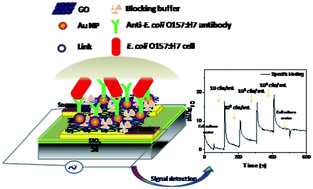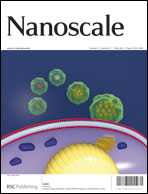Ultrasonic-assisted self-assembly of monolayer graphene oxide for rapid detection of Escherichia coli bacteria
Abstract
Due to potential risks to the environment and human health arising from pathogens/chemical contaminants, novel devices are being developed for rapid and precise detection of those contaminants. Here, we demonstrate highly sensitive and selective field-effect transistor (FET) sensor devices for detection of Escherichia coli (E. coli) bacteria using thermally reduced monolayer graphene oxide (TRMGO) sheets as semiconducting channels. The graphene oxide (GO) sheets are assembled on the aminoethanethiol (AET)-functionalized gold (Au) electrodes through electrostatic interactions with ultrasonic assistance. Anti-Escherichia coli (anti-E. coli) antibodies are used as receptors for selective detection of E. coli cells and integrated on the FET device through covalent bonding with Au nanoparticles on the GO surface. The TRMGO FET device shows great electronic stability and high sensitivity to E. coli cells with a concentration as low as 10 colony-forming units (cfu) per mL. The biosensing platform reported here is promising for large-scale, sensitive, selective, low-cost, and real-time detection of E. coli bacteria.


 Please wait while we load your content...
Please wait while we load your content...